Price makes news, not the other way around. A market is going to go where a market is going to go. ~ Paul Tudor Jones (h/t @MikeWShell)
In this week’s Dirty Dozey [CHART PACK], we look at a triple-barrelled buy signal in risk-assets and go through last week’s rare multiple breadth thrusts and what they mean. We make the case for a SPX run up to Jan highs before rolling over again. Then we look across the pond at new all-time highs, and pitch long homebuilders, plus more…
- The weight of the evidence strongly tipped in favor of the bulls last week after a number of high signal breadth thrusts triggered (more on this below). It’s our view we’re in a broader topping process at best as we expect a recession near the end of the year. But after last week we have to be open to the possibility of a run at the prior Jan highs, which is 20% above current levels.
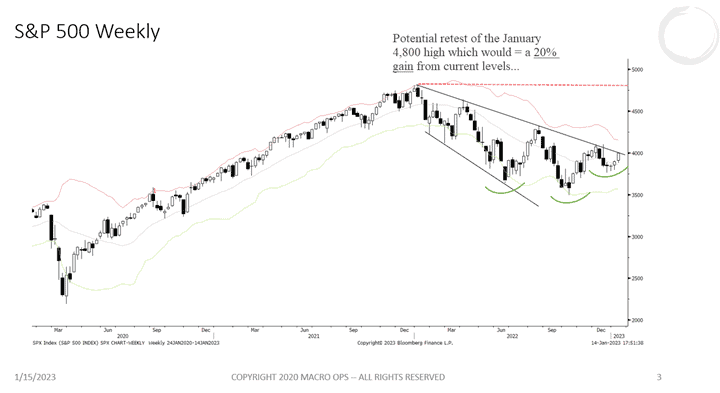
- From Quantifiable Edges (link here):
“On Thursday afternoon I witnessed 3 different breadth thrust signals I watch all trigger on the same day. The signals, with link to learn more about them are:
- Walter Deemer’s Breakaway Momentum (BAM) signal
- Wayne Whaley’s Advance Decline Thrust (5) from his paper “Planes, Trains, and Automobiles: A Study of Various Market Thrust Measures”
- Quantifiable Edges “Triple 70” thrust signal.
“Thursday was the 1st time ever that a Triple 70, a Deemer Breakaway Momentum (BAM), and a Whaley ADT5 thrust all happened on the same day. There have been 7 instances where 2 of the 3 triggered on the same day. They can all be found in the table below.”

- Here’s NDR’s version (slightly more relaxed parameters) of Deemer’s BAM signal, along with historical returns. The BAM has only triggered 25 times since 1945, which is important because the more rare a signal, the greater its efficacy (h/t @_rob_anderson for the chart).
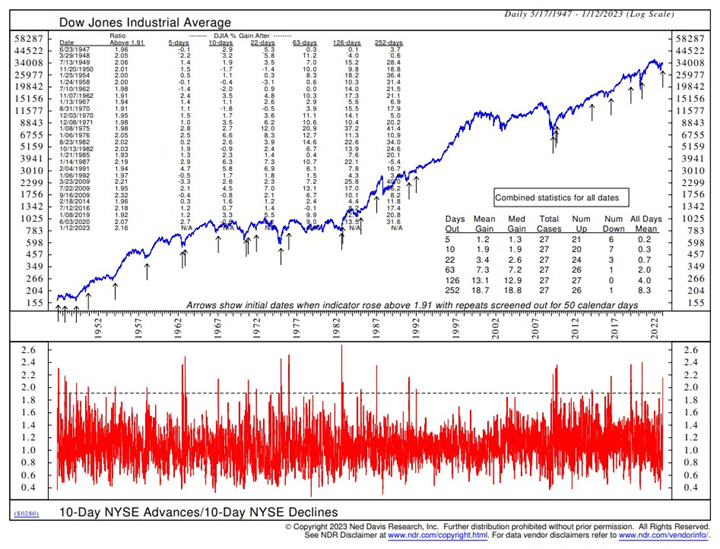
- And the more confirming evidence there is the more we need to pay attention. To quote a recent tweet from Deemer, “It’s the performance following a Whaley Breadth Thrust *in conjunction with* Breakaway Momentum that’s really relevant here. One might call it a “double-barrelled buy signal”, to steal a phrase from GOAT Marty Zweig.”
The following shows the SPX’s forward returns following a WBT via @ChandraNukala1.
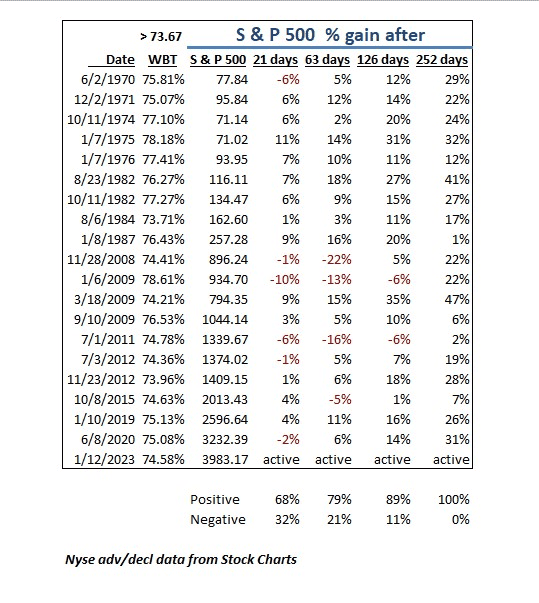
- @jaykaeppel also points out that:
“Speaking of breadth thrusts – the chart and table below display S&P 500 performance after:
a) S&P is above its 100-day moving average AND
b) NYSE McClellan Oscillator crosses above 99
No guarantees, but definitely one for the bullish side of the ledger. “
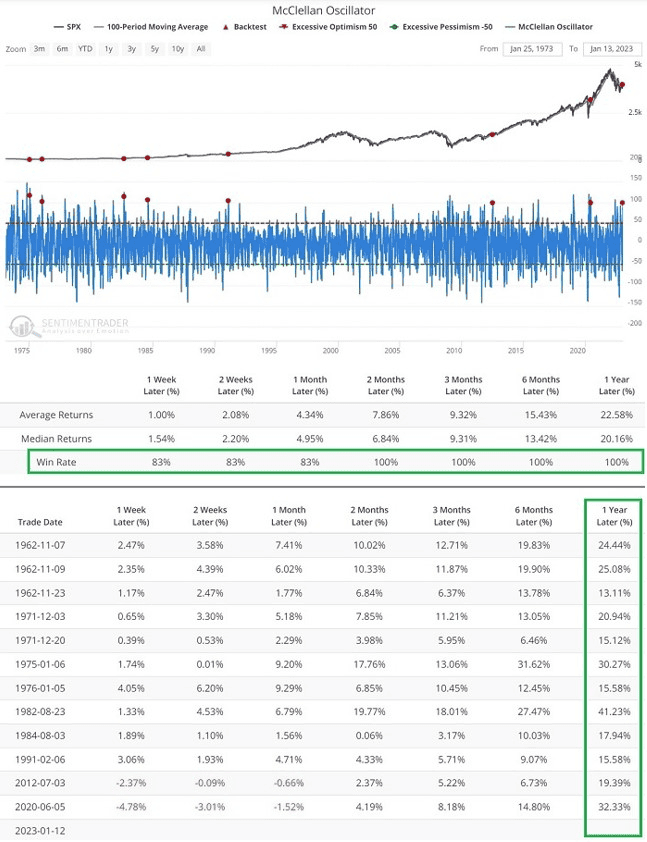
- And not to beat a breadth horse but there’s also this from @SethCL:
“📢Of my 10 BEAR-2-BULL signals, 9 have now turned Bullish as of this past week
📢Latest one is the NYSE Moving Balance Indicator
📢Only 14th time since 1966 signal has fired
📢Chart depicts recent occurrences since 2018”
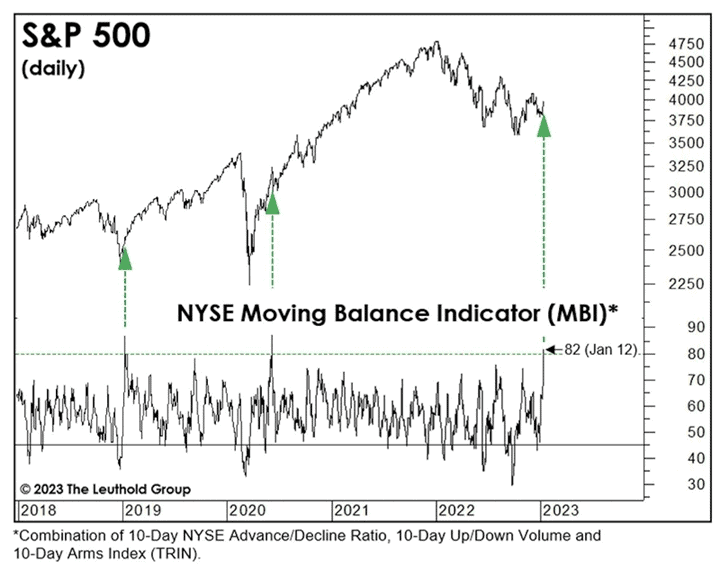
7. These multiple thrust signals are also being confirmed by the internal leads. The biggest positive being the breakout of discretionary vs staples (brown line in upper right chart) from its 6-month range, which is a requisite for a more sustainable bull advance.
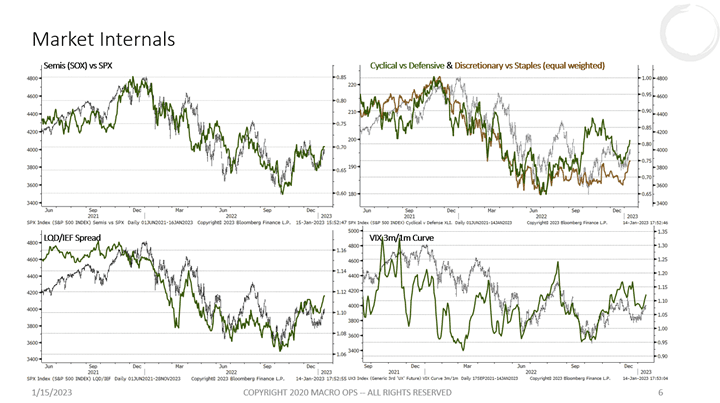
- These bullish developments contrast with the quite bearish readings of short-term sentiment and positioning. AAII Net Bull-Bears is not far off its recent lows, Put/Calls (10-day smoothed) recently climbed above 2std which is a level that tends to mark durable bottoms. And net commercial positioning in major US indices remains very long, indicating that specs are still crowded short.
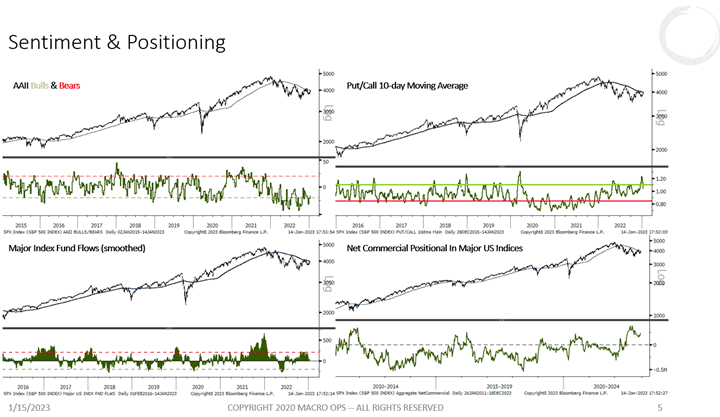
- And a number of international markets are looking even better. Here’s the FTSE 100 on a yearly chart, showing the index is making moves to break out of a 6-year compression regime. Remember, compression regimes lead to expansion regimes (big trends).
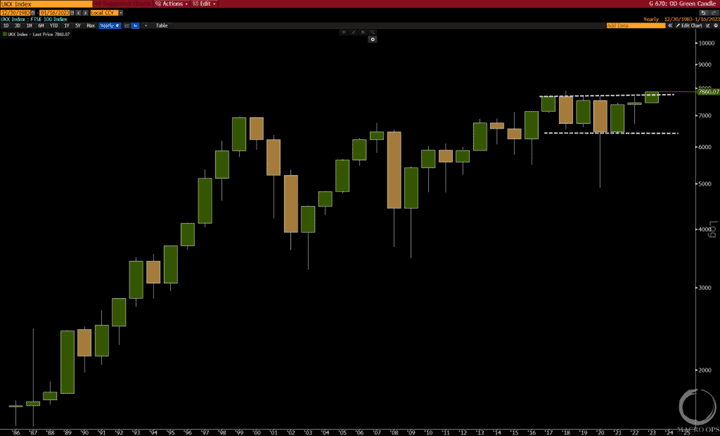
- And international equities have the additional benefit of trading at a massive discount to their US counterparts.
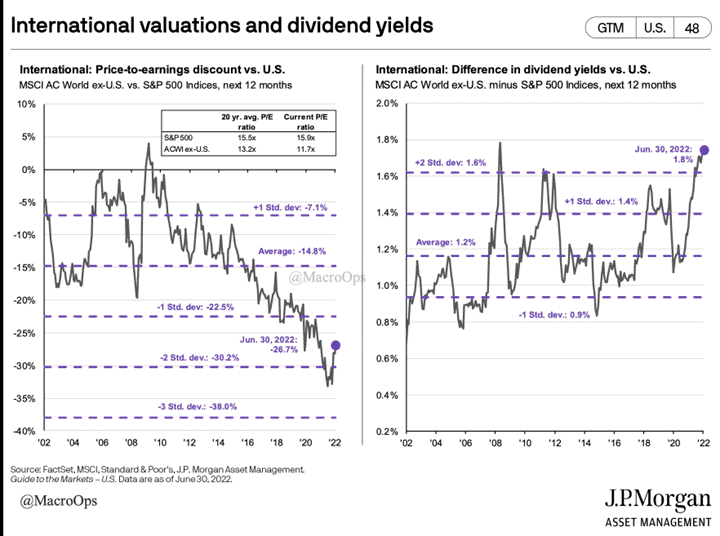
- Four countries/markets with some of the strongest breadth profiles are the UK, Hong Kong, Europe, and Mexico.

- One area of the market you might want to get exposure to is in Homebuilders, which we mentioned back in November (link here). This is about as contra as you can get but here’s my two-minute macro take:
The market is waaaay overweight a recession in the 1st half of this year, when economic data and monetary lags suggests that’s not going to happen until closer to year’s end. This means Q1/Q2 earnings won’t be as bad as many expect, which means people are underweight risk. A reverting risk-cycle + a reopening China should help compress wide mortgage spreads, boosting demand in a supply constrained market, which is good for builders.
We like BXC (monthly chart below) and BLDR.
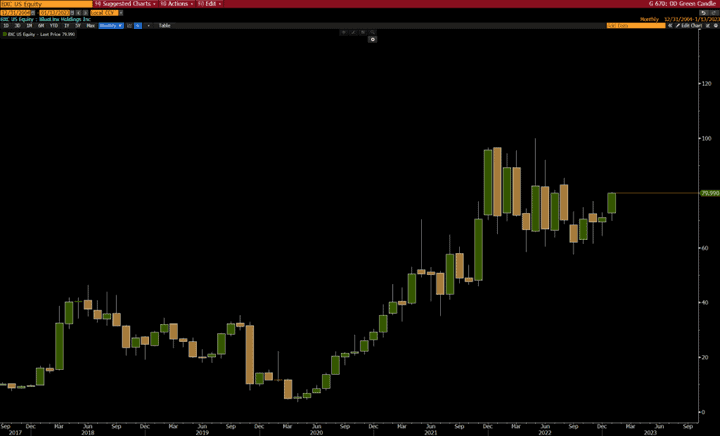
Thanks for reading.
Stay frosty and keep your head on a swivel.







